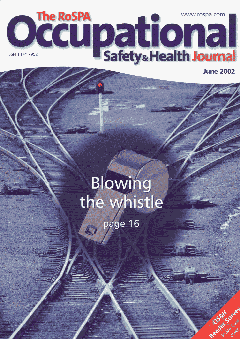

 |


 | The Royal Society for the Prevention of Accidents has given us permission to reproduce the 2 articles about the Holden verses Connex South Eastern tribunal that were recently published in the RoSPA Occupational Safety & Health Journal. The text is as the original; some of the graphics have been amended or omitted due to differences in format. For copies of the magazine, please go to the RoSPA Journals. The June 2002 article is below; the second article is from the July 2002 issue. Some background information has been written for clarification. All material from these publications is the copyright of RoSPA. |
 | This Working Life ______________________________________________________________________________ |
|
The DSM insisted that, "any future letters of this kind should not be posted. This is not what that notice board is for. If this occurs again it could lead to disciplinary action. Is that understood?" Laurie understood. The interview was terminated. Laurie has no doubt about the significance of this meeting. "It was," he says, "the first shot across my bows." But it was not the last. Before the end of 2002 the shots were to become not so much a fusillade as the Industrial relations equivalent of saturation bombing… Laurie Holden's story is continued next month. |
| The RoSPA Occupational Safety & Health Journal/June 2002 > Home |
| The RoSPA Occupational Safety & Health Journal/June 2002 > RoSPA July 2002 article |
| The RoSPA Occupational Safety & Health Journal/June 2002 > A Few Follow-Up Comments |

 |